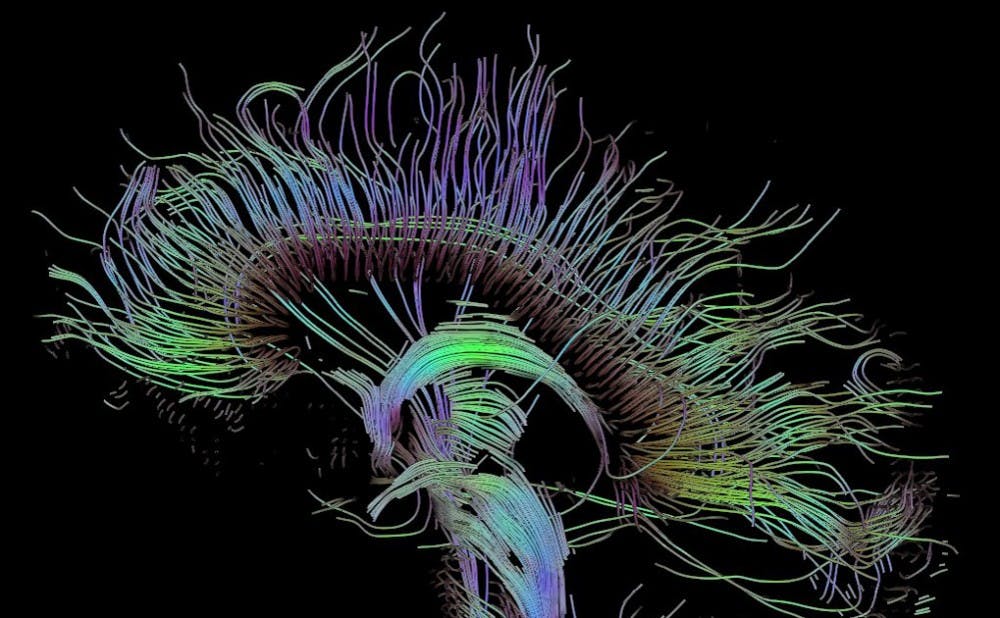Researchers have discovered that creativity might be related to the strength of neural connections between the brain's left and right hemispheres.
The study—authored by David Dunson, Arts and Sciences distinguished professor of statistics, and Daniele Durante, a postdoctoral fellow at the University of Padova in Italy—attempted to uncover how neural factors influence creativity. Comparing those in the top and bottom 15th percentiles of a composite creativity index, the study found that more creative individuals had more inter-hemisphere connections.
Dunson and Durante's research belongs to a field known as "connectomics," which uses networks to understand the brain instead of separately analyzing different regions. For example, Dunson indicated that the study contradicts a common myth that more creative people have stronger use of the right half of the brain.
“Our findings are consistent with recent ideas that creative innovations arise from communication between regions of the brain that ordinarily are not connected,” Durante explained.
Data for the study came from MRI scans conducted by Rex Jung, clinical professor of neurosurgery at the University of New Mexico. Jung's team traced the path of axons—which conduct electrical impulses between cells—using the movement of water. They then recorded the brain structures and had participants take various tests designed to assess creativity, eventually assigning a creativity score.
At this point, Dunson and Durante analyzed this data looking for statistical differences between brain structures. What was different about this research, Dunson explained, was the methodology for interpreting the information.
“We used a novel method to discover and analyze relationships between nuances in brain structure and different phenotypes including neuropsychiatric diseases and for this particular study, creativity,” he said.
Eventually, the study found statistically significant differences in the number of inter-hemisphere connections between those in the top 15th and lowest 15th percentiles of creativity. These differences were mainly in the frontal lobe.
Dunson said that the findings disprove the right-brain creativity myth, which says that creative people use the right half of their brain more than the left. Looking at connectivity differences within each hemisphere, there was no statistical difference between creative and non-creative participants.
Both Durante and Dunson acknowledged, however, that their study had a relatively small sample size. In order to confirm that having more connections between the two hemispheres is in fact linked with creativity, a more diverse group than the college-age volunteers in this study is necessary. There are also other alterations to the current research design that the study’s authors hope to explore.
“We hope to obtain more information about each individual’s brain connections, including the number and shape of the fibers, and use that in our analyses to gain more information about the brain connections,” Durante said.
Get The Chronicle straight to your inbox
Signup for our weekly newsletter. Cancel at any time.

